Development of columnar topography in the excitatory layer 4 to layer 2/3 projection in rat barrel cortex
- PMID: 14507976
- PMCID: PMC3066032
- DOI: 10.1523/JNEUROSCI.23-25-08759.2003
Development of columnar topography in the excitatory layer 4 to layer 2/3 projection in rat barrel cortex
Abstract
The excitatory feedforward projection from layer (L) 4 to L2/3 in rat primary somatosensory (S1) cortex exhibits precise, columnar topography that is critical for columnar processing of whisker inputs. Here, we characterize the development of axonal topography in this projection using single-cell reconstructions in S1 slices. In the mature projection [postnatal day (P) 14-26], axons of L4 cells extending into L2/3 were confined almost entirely to the home barrel column, consistent with previous results. At younger ages (P8-11), however, axonal topography was significantly less columnar, with a large proportion of branches innervating neighboring barrel columns representing adjacent whisker rows. Mature topography developed from this initial state by targeted axonal growth within the home column and by growth of barrel columns themselves. Raising rats with all or a subset of whiskers plucked from P8-9, manipulations that induce reorganization of functional whisker maps and synaptic depression at L4 to L2/3 synapses, did not alter normal anatomical development of L4 to L2/3 axons. Thus, development of this projection does not require normal sensory experience after P8, and deprivation-induced reorganization of whisker maps at this age is unlikely to involve physical remodeling of L4 to L2/3 axons.
Figures
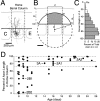

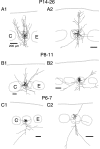
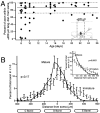
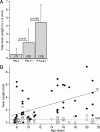

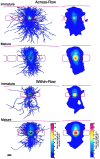


References
Publication types
MeSH terms
Substances
Grants and funding
LinkOut - more resources
Full Text Sources
